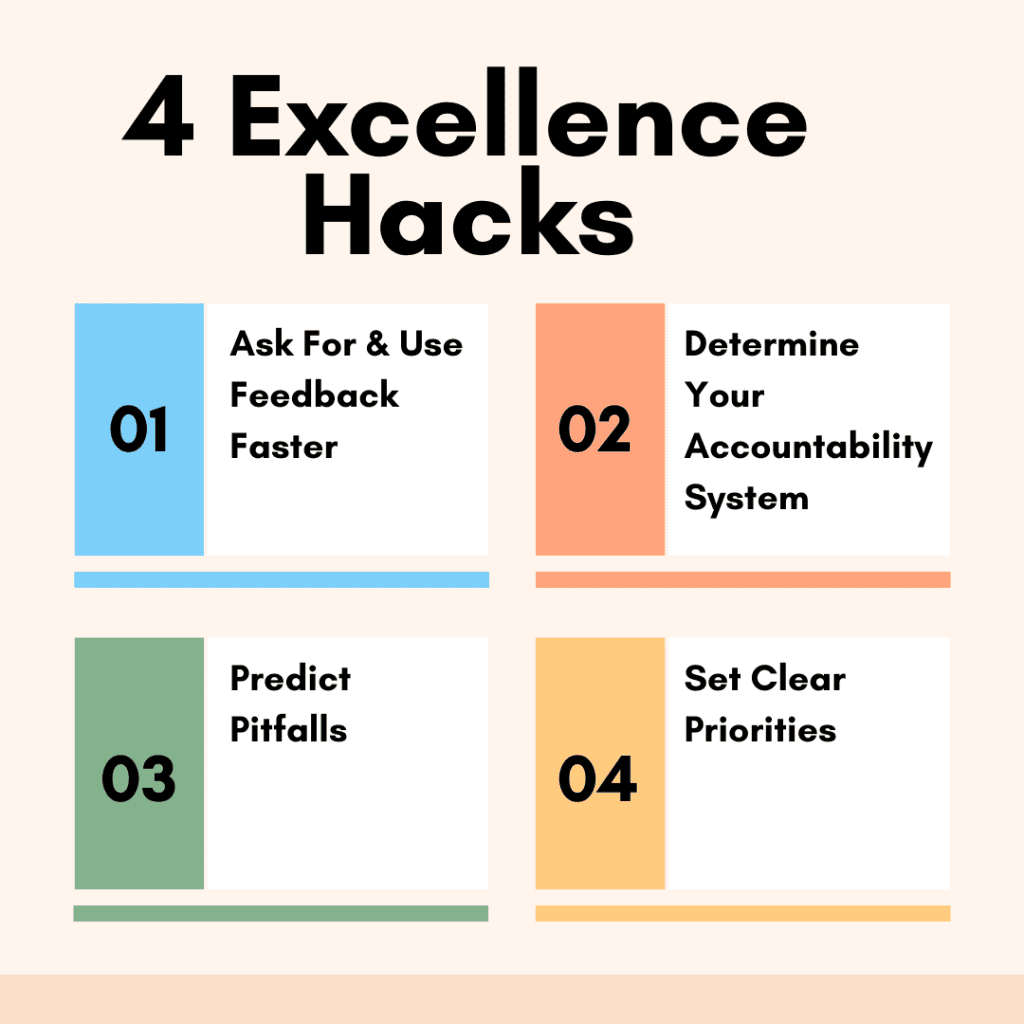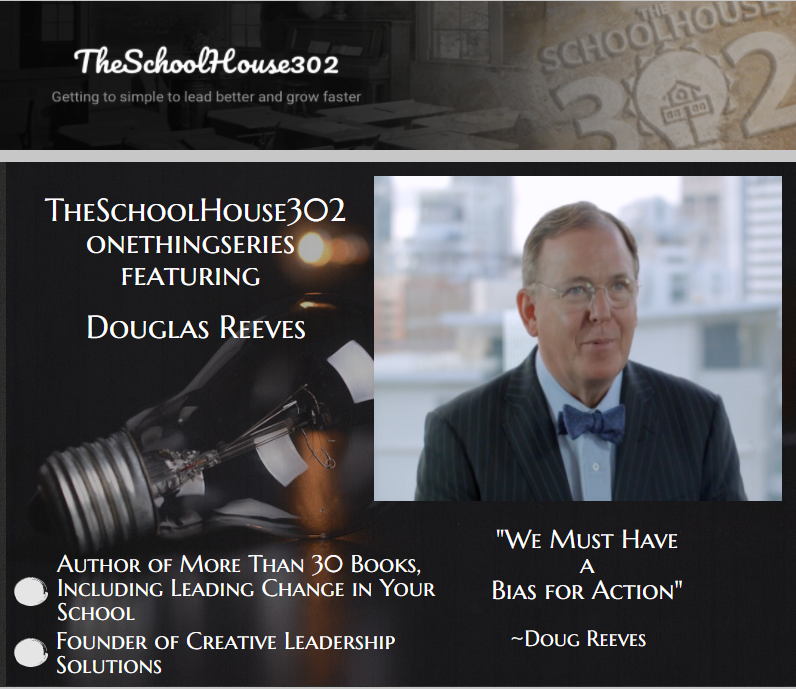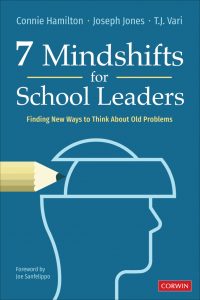4 Excellence Hacks That Every Educator Needs to Know
Excellence is not an exception, it is a prevailing attitude. ~ Colin Powell
Excellence occurs primarily in two fashions: 1. Efficiencies–the things we get faster at doing so that our capacity is greater, and 2. Effectiveness–the things that we do that have an extreme impact given their intended outcome. It’s worth drawing these out a bit further so that we’re clear about what makes for excellence before we dive into some of education’s super-hacks for teachers and leaders.
First, take a look at this 2×2 grid from InsightSquared. It is a simple, yet powerful, representation of the cross section between pursuing the right work and using the right resources–effectiveness and efficiency. Although this grid focuses on cost, we can easily replace it with any other aspect of teaching or leading in schools, such as lesson planning and the use of certain strategies in the classroom. Our later example, as in the use of homework, is often done with good intentions to increase learning but doesn’t yield the outcome we expect. As such, the teacher is pursuing the right goals, but with the wrong resource. This is an issue that we experience frequently, and, in order to achieve excellence, we need to do the right things, the right way.
With that in mind, let’s consider both concepts–efficiency and effectiveness–at once and then each separately. Although, efficient and effective are associated with one another, they are not the same thing. One is about getting faster and doing more, the other is about having a greater influence. A problem can occur when we value one over the other, though, because efficient can actually be the enemy of effective. In other words, people can get really good at following a process that doesn’t have the intended impact.
Let’s revisit the concept of assigning homework. In the case of mathematics, we might use an assignment of 15 practice problems. Teachers (and students) can get quite efficient at assigning, completing, and grading homework, but that doesn’t mean that it’s an effective learning strategy. Quite the contrary, most homework strategies, unless used for retrieval practice or another research-based independent assignment, don’t have an effect size higher than about .28 versus implementing a flipped classroom, which has an effect size of .58.
Comparing homework to a flipped classroom, which typically introduces the new learning outside of the classroom and creates opportunities to review and practice within the classroom, like homework is supposed to do, is a perfect demonstration of the difference between efficient and effective. We can efficiently do one (homework) without being effective, and we can easily implement the more effective one (flipped classroom) without being efficient (takes tons of the teachers’ and students’ time to do).
But let’s dive deeper into the positive aspects of being efficient. Simply put, people who are efficient can get more done than people who aren’t. There are two ways that we become more efficient at any given task. The first is no secret: we practice long enough that we get better and faster at doing it. Anyone who does something over-and-over again will get incrementally better at it. The problem with this first solution is that it takes time, maybe even years, to become more efficient at many of life’s greater challenges. That’s why the second way is so important because it’s not just about the person becoming more efficient but rather uncovering “efficiencies” that can be applied as strategies.
When we understand efficiencies in the completion of a task, we can complete the task faster, even if we’re new at it. That’s why, as long as efficiencies don’t become less effective, being efficient can allow you to do something faster, more accurately, and even more often. That’s when the concept of efficient bleeds into the concept of effectiveness. Being effective isn’t the same as being efficient because, given the case of the flipped classroom from above, if the effectiveness takes forever, it still reaps its benefits but the benefits aren’t timely.
In that case, our job is to find efficiencies for an effective task. What are the small steps that we can take in the initial implementation of a flipped classroom that don’t take an incredible amount of a novice-flipper’s time but still count for an impact on learning? Hence, the question that every leader and every teacher should consistently ask: what are the efficiencies in making a change that will have a greater impact on what I’m trying to accomplish? Are there simple ways that I can lead better and grow faster that take less time than other strategies and garner greater results as such? We have the answer for you, embedded within the following four simple yet underused leadership hacks.

Ask For And Use Feedback Faster
Think about how often you’re performing any given task without an observer. Especially for tasks that are new to you, not having an observer is like slamming a bunch of weights on the bar, having no idea if you can bench press that much, and then going for it without a spotter. Even worse, you’re alone in the gym. It’s dangerous. The best hack for getting better at anything we choose to do is by finding someone to give us feedback. We have to ask for it and then use it. And we have to do that faster than we traditionally would.
Pro Tip: Next time you ask for feedback, don’t reflect on the feedback, implement it and then reflect on the implementation.
Determine Your Accountability System
Too often, we set goals without determining the measurements. And, sometimes our measurements are too far off to see gains as we’re trying so hard to form new habits. We say things like, I wanna lose 20 pounds or we need to increase our attendance rates this school year. While those are important and lofty outcomes, they’re not goals and they’re not the type of measurements that will hold you accountable.
As far as goals go, the first statement’s goal should be something about being healthy or feeling good. The second “goal” should read more about daily student engagement. But, because our goal writing skills suffer so do our measurement and analysis skills. It’s far more realistic and attainable to measure more incremental goals, that’s what holds us accountable from day-to-day and even minute-to-minute. Trying to lose 1-2 pounds this week will keep you from eating the pizza for lunch; 20 pounds with no ending date in sight is a disastrous equation. Celebrating daily and weekly class-by-class attendance is not only superior to an annual number, it uncovers both the bright spots and the places that need our attention.
Pro Tip: Underpromise and overdeliver. You may have used a strategy like this in your school or business plan, but it works just as well, if not better, with your own mental capacity for reaching excellence. If you tell yourself that you want to lose 1-2 pounds this week, and you lose 2.5, your motivation will skyrocket.
Predict Pitfalls
Perceptual acuity is knowing what’s around the corner. Effective educators not only have a great vision but they also see the issues that are up ahead and can properly plan for them. This ability to “see around corners” is not an innate gift bestowed on natural born leaders, but rather a quality possessed by educators who are consciously present. The present leader does three things exceptionally well: 1. Tune In, 2. Presently Lead, and 3. Forecast the future.

Predicting pitfalls is directly aligned to forecasting the future since leaders work to build the future they desire. As they are actively building the future, they are continually looking for blind spots that they may be missing or overlooking. As teachers begin a new unit, the pitfall-predicting master will start with a pre-assessment so that they can tailor the lessons that follow to address the actual needs of the students. This is a perfect example of predicting and overcoming a potential pitfall with planning.
Pro Tip: Seek Counsel. It is impossible to predict every pitfall and issue that you are going to encounter. One great tip is to have a small team of individuals with whom you work and who you fully trust to call out a pitfall in your plan. This is a great component of any high-functioning PLC. Think about this team as similar to the blind spot technology on the side mirror of a car. The true power in this technology isn’t that it alerts you to something in your blind spot, but rather that it prevents you from needing to take your eyes off the road so that you can continue to face forward.
Set Clear Priorities
Every day there are countless things that are competing for your time. As you manage yourself throughout your day, you will need to have a clear understanding of your personal priorities. Priorities are different from goals. Priorities have to be in real-time all the time. While you might set aside time each day, dedicated to a goal that has more of a long term objective, like earning your Level 2 Google Certified Educator, your priorities are minute-to-minute decisions about things that matter most. As an administrator or teacher, you can ask yourself what do I have to do each day that will lead to the greatest impact on student achievement? The answer is going to be something about visiting classrooms, which might not align as directly to your goals as it does to what you need to be doing with your time. That’s why having clear priorities is a hack for daily excellence.
ProTip: Use the past tense in your morning journal. Hugh Jackman, in a powerful and enlightening podcast with Tim Ferriss, describes how he writes out something as if it already happened. In the morning, he’ll write something like this: “Today, my son and I had the best time together…” Essentially, Hugh is describing a priority that he wants to manifest on that particular day and actually texts it to his wife but in the past tense. The power is threefold: First, he knows exactly what he wants to happen (sets a clear priority). Second, he shares it with someone who can ask him about it later (holding him accountable). Third, he wills it into the universe for energy and enthusiasm (believing in himself and the world he creates).
Bonus Hack: Power Play
Although we don’t believe in tricks or silver bullets, there are a few power plays that great leaders learn to use over time. All of these suggestions are actually more of a way of thinking than they are actions. When you think in ways that couple things together, kill two birds with one stone, or habit stacking, you are taking advantage of what we refer to as a power play.
In the world of sports, a Power Play refers to a time when one team has an advantage over the other since an individual may be out of play, in the penalty box or off on the sidelines. Throughout our day, we have the ability to seamlessly work and complete things that give us an advantage by saving us time and making us more effective and efficient. This may sound like a silly example, but, every morning, a great time to pack lunch is while the Keurig brews each pod of coffee. It’s a simple thing to do while the Keurig warms up and then each pod brews. Because we often make our significant others a morning cup as well, we even have more time to make a healthy lunch. While some folks will stand there, waiting for their morning mug, efficiency and effectiveness hackers use that time to couple two tasks in one.
Pursuing excellence is a journey. The above mentioned hacks are easily doable and will transform the way you work as a teacher or leader. Just one of the hacks can change your efforts from slow and monotonous to quick and impactful. The key to excellence is knowing how to be efficient and effective at the same time so that one or the other doesn’t get in the way of your success. Let us know which hack you use this week.
As always, let us know what you think of this with a like, a follow, or a comment.







 7 Mindshifts for School Leaders: Finding New Ways to Think About Old Problems.
7 Mindshifts for School Leaders: Finding New Ways to Think About Old Problems. 


